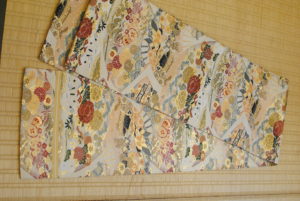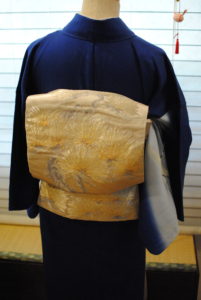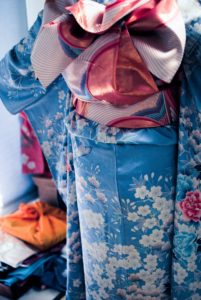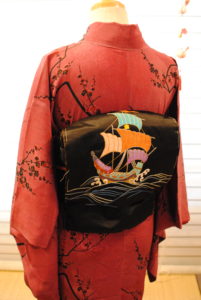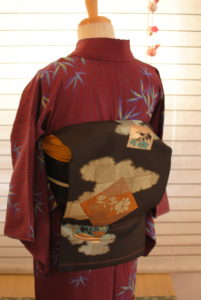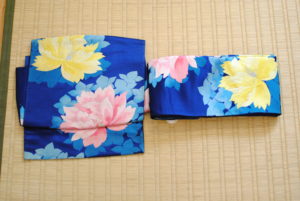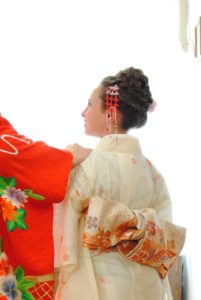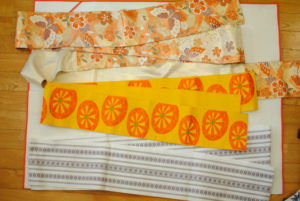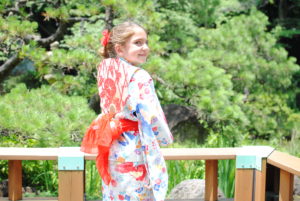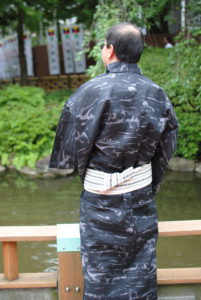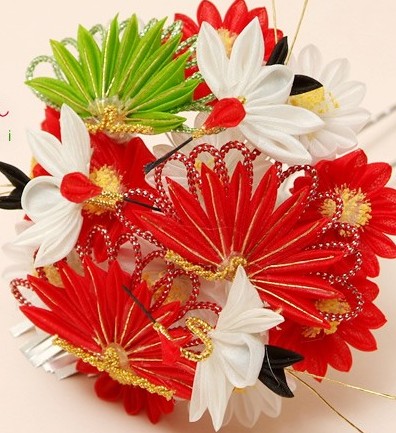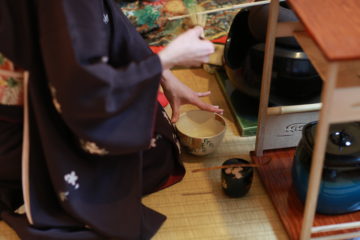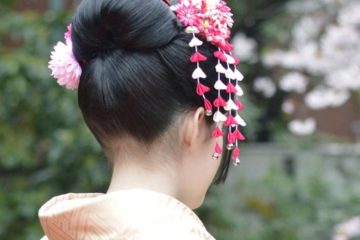Obi sash is one of most important accessories for Kimono. It is said “you should use 3 times more money to Obi than Kimono” . Obi has to work as tie so if you buy cheep you cannot tie it well. As well as you don’t need to buy many obi just have a nice one is also wisdom of history and you can share it with your family because size is not so important (still important but not as much as for Kimono).
Also good coordinate Kimono and obi shows your intelligence, which means expression of how much you understand Kimono. You can break but I trust we must know it then break with respect.
These obi explanation show mainly figuration difference and formality. We also need to think seasonality as well as situations (you are hostes or guests)
Maru Obi
Maru Obi are wide obi that are made with the pattern covering the entire length of the obi, front and back. Pattern are always good luck motive, like cranes, fenicks and use gold.These used to be for bride wedding Kimono but are not made.
Fukuro Obi
Fukuro Obi are full-width obi is but similar to maru obi except that the pattern does not cover the entire obi on both sides. The reverse side is typically not decorated and the front may be decorated either only on the parts that show when worn or the entire front side. These areas of not decorated fabric make fukuro obi more lighter than maru obi. Of the obi styles commonly used today, fukuro obi are the most formal. You can make decorative style tie, like Fukurasuzume, Bunko, Darari etc… Fit Furisode, Homongi, Tuskesage, Iromuji, Kurotomesode kimonos.
Nagoya Obi
Nagoya Obi are a hybrid style, made to be more comfortable and easy to dress. There are many variations of Nagoya obi but the typical style has the entire length that wraps around the body sewn in a half width permanently and the exact amount needed to make the ‘taiko’ shape in the back sewn full width. Nagoya obi are less formal than Fukuro Obi and more comfortable since it is lighter. Fit Komon, Ttukesage, Iromuji, Tsumugi Kimonos.
Kyobukuro Obi
Kyobukuro Obi are similar to both nagoya and fukuro obi. They are full width, like fukuro obi, and require folding but are shorter and often have the design only where you would see it, like a nagoya obi. Often has picture on both side. Fit Komon, Ttukesage, Iromuji, Tsumugi Kimonos.
Compered Maru obi (right) Fukuro obi (middle) Nagoya obi (left)
Pre-Made Obi
Pre-Made Obi are obi that come in two pieces (sometimes one piece), intended to be quicker and easier than standard obi. Some pre-made obi have the otaiko shape permanently fixed but others still also for Furisode like Fukura suzume, Darari etc… Often those also can been seen pre-made hanhaba obi with Bunko for Yukata. Depend on figures, you can use it for any Kimono.
Kobukuro Hanhaba Obi
Kobukuro Obi look like narrow fukuro obi, they frequently have two different fabrics on either side but can also be a single fabric sewn in half. Made with cotton, silk, polyester. Fit wool and cotton Kimono or casual Tusumugi, Kimono (if silk obi) 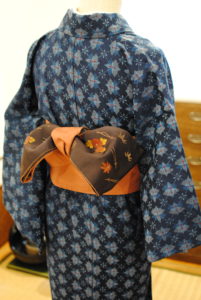
Hitoe Hanhaba Obi
Hitoe Hanhaba Obi are single layer narrow obi which are made with silk, cotton , polyester and hemp. Fit yukata, Kimono (Silk obi one)
Hoso Obi
These obi are narrower and longer than a typical hanhaba obi. Hoso obi are often used for dance performance since it is enough long to tie in many styles. However you can also use for casual Kimono. Made with silk, polyester. Fit Dance kimono, casual kimono.
Compered Hosoobi (top) Kobukuro(middle) Hitoe hanhaba (under)
Heko Obi (both women and men)
Broadly speaking, Heko Obi are soft obi. Most are floppy and simply wrapped around the body and tied in a bow but there is a style for women that is wide and slightly stiff, which can be tied similarly to other kinds of obi. For women and children, heko obi are typically casual and worn with yukata , wool for men and women. Fit Yuakta, wool, kid’s Kimono
Kaku Obi (for men only)
Kaku Obi are long, narrow obi intended for use with men’s kimono and yukata. There is no difference between a kaku obi for yukata or kimono. But for Kimono it is nice to have silk and hump one but Yukata is cotton. Fit men’s Kimono
